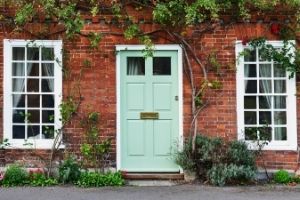For some people, modern homes just aren’t their thing. A classic home from another time in history can draw a person’s attention for many reasons. However, before you make any final decisions, there are a few things to look out for when you’re buying an old house. If you’re comfortable with the potential work or way of living that may come with an older home, you should be good to go on your purchase.
Heating and Cooling
Older homes from the early 1900s or before may use cast-iron radiators to heat the rooms. These free-standing systems are responsible for heating the air in the home through convection. Hot water circulates through the pipes, often giving off steam. Radiators are very useful in heating a room that is properly insulated and secured for cooler weather.
If the home has radiators, the chances of having any pushed air ventilation are slim. This means that when it’s hot out, you don’t have an option for installing a central air conditioning system unless you want to shell out big bucks to install ventilation systems. To cool your home in hot weather, you’ll have to consider fans or window or wall air conditioning units.
Health Concerns
When it comes to older homes, a few things have changed regarding safety standards for housing materials. There are certain areas of the home that you may want to test before proceeding with a purchase, as they could be dangerous to your health.
Lead Paint
Older homes are more likely to have used lead-based paint. In 1978, the government banned the use of lead paint, but millions of homes that possess lead-based paint still exist today. Lead was found to cause severe health problems. You must either safely remove this type of paint or paint over it with a paint that’s designed to encapsulate it.
Asbestos Siding
Asbestos is a cancer-causing natural mineral that was once put into many products. Its fire-resistant properties made it a common material in siding in the early 1900s. Though you can have the siding on the house tested for asbestos, this can often be more dangerous, as it disturbs the fibers.
Radon
Radon is an omnipresent gas found in rocks and soil; with long-term exposure, it can lead to lung cancer. It is estimated that one in every fifteen homes in the US displays elevated radon levels. Radon can be discovered in old and new houses. Still, newer homes are often built with greater precautions when laying foundation layers.
Electrical
Cloth coated wires were common in homes built before the 1960s. Indeed, electricity and flammable materials aren’t great together. There were also fewer things placed on circuits back then, and as time went on, a homeowner may have installed additional outlets and fixtures to already full circuits. If you conduct an electrical inspection and find that it is not up to code based on current electrical safety guidelines, it’s best to do some rewiring. Frequently blown fuses, flickering light, buzzing sounds, sparking, or loose outlets are all indications that the house may need home rewiring.
Buying an old home can be a great investment and may be right up your alley as far as style goes. Don’t let potential issues deter you. Stay mindful of things to look out for when you’re buying an old house. Homes that are older than forty or fifty years and haven’t undergone any significant renovations may require some safety updates. Being aware of what you should do prior to moving in can allow you to negotiate a better deal before you to move into the home you want.
If you like this post, here are some more:
4 Things to Do Before Buying an Older Home
How to DIY an Energy Audit for Your Home
Give Your Home a Roof-Lift: 5 Tips for Replacing the Roof on Your Older Property


